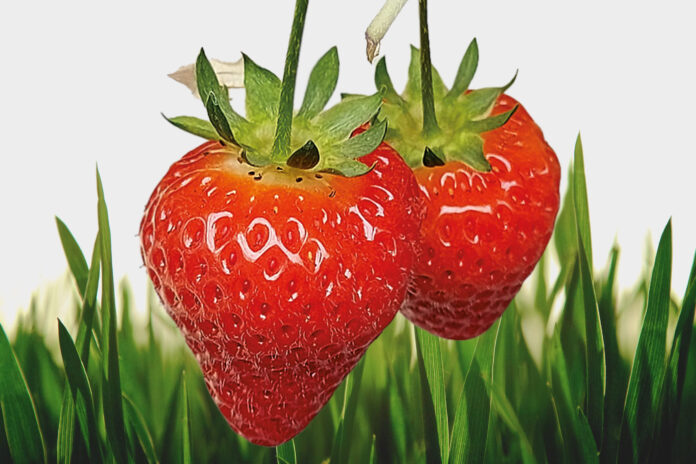Work carried out on the new and popular ‘Malling Centenary’ strawberry variety has allowed Teagasc researchers to gain a better insight into the fruit’s promising potential. Eamonn Kehoe, Soft Fruit Specialist, Horticulture Development Department Teagasc Food Research Centre, has the juicy details.
For decades, strawberries have been the main soft fruit crop grown in Ireland. In the 1970s and 1980s, this crop consisted mostly of processing strawberries, but in recent times this has been offset by a huge increase in protected fresh strawberry production.
At present, we produce at least 8,500 tonnes of fresh strawberries per year, worth an estimated €45 million. For over 40 years, the Dutch cultivar ‘Elsanta’ was the most popular cultivar grown and the mainstay of Irish production. A few years ago, however, it was replaced by a new variety: Malling Centenary.
A cause for celebration
Malling Centenary was bred and released for the Centenary celebration of the East Malling Research (EMR) centre in Kent. The centre – founded in 1913 by an association of over 600 fruit growers – is most famous for its work on apple rootstocks.
Malling Centenary is classed as an early-midseason cultivar making it suitable for early and extended season production. Its main benefit is the very high percentage of Class 1 (good quality) fruit produced each yield. In fact, it’s normal for over 90% of the produce to be considered Class 1.
The yield so far is a little lower than ‘Elsanta’, but the increase in operational efficiency – for example picking and packhouse speeds – easily makes up for any shortfall in respective yield. The fruit shape, size and quality, including shelf life, are all excellent.
Digging deeper
Initially, there was very little known about this new strawberry variety, so Teagasc undertook research that primarily focused on establishing a growing system for the crop using a heated glasshouse unit.
The first trial was focused on developing the optimal nutrition regime for this new variety, and the main goal was to achieve successful crop production with lower fertiliser inputs. Lower fertiliser inputs save money for the grower and have considerable benefits for the environment, making it a major win when achieved.
We grew one crop of Malling Centenary over two growing seasons, planting them in early 2018 in a heated glasshouse unit. The crop was fed with both a low and a standard feed and was overwintered in the glasshouse, protecting the strawberries from freezing cold temperatures.
Once growth began in early 2019, night-break lighting using special LED lights was used to break the crop dormancy. Without the use of these lights, crop yields and strawberry quality can be much lower.
Uncovering remarkable potential
In the first season, the fruit harvest took place between late April and late July 2019. This long growing season is a phenomenon when growing Malling Centenary using heated glass. The variety contains an ‘ever bearing’ (long-day) variety in its breeding line, which may be contributing to this very long season extension.
The yields in the first season were 675g and 635g per plant using the low and high feed respectively. There was no difference in the Class 1 fruit between the feed levels, and the quality was very high, with scores of 88% and 89% respectively. This very high Class 1 quality demonstrates how you can increase the productivity and fruit quality on the farm by growing this variety.
In the second season of production, fruit harvesting took place between late April and late July 2020. The crop produced 463g and 454g of fruit per plant from the low and high feed treatments respectively. Once again there was no difference between Class 1 quality, with a score of over 80% for both the low and high fertiliser treatments.
Promising outlook for strawberry production
In total, over the two growing seasons, both the low- and high-fed crops gave a yield of 1.13kg and 1.08kg of fruit respectively. This outstanding result demonstrates that you can achieve an excellent yield whilst reducing the nutrient input into the crop, without a detrimental effect on crop yield or fruit quality.
Furthermore, this means less fertiliser and water is needed for successful production, offering opportunities for impressive economic and environmental benefits.
This article featured in the TResearch Autumn/Winter 2021 Magazine. TResearch is an official science publication of Teagasc. It aims to disseminate the results of the organisation’s research to a broad audience.
If you liked this article, you might like others in this publication. View TResearch Autumn/Winter 2021 here (PDF).
You might also like to read the Fresh Strawberry Production Factsheet
Find out more about Fruit Production from Teagasc.
Find Eamonn Kehoe’s most recent article on Strawberry research for Horticulture Connected’s Autumn/Winter edition here.








